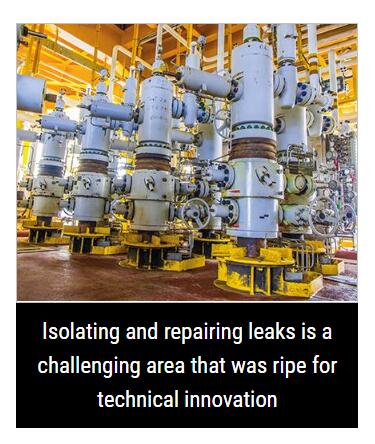Welcome to Sino Bearings web
24x7 HOTLINE:+86-28-81454188

 NEWS
NEWS
Graham Steele introduces new developments to reliably address leaks and pressure loss in DHSV and production packers
Some traditional solutions used to repair leaks within downhole safety valve (DHSV) control lines are only partially effective and, in some cases, unreliable; occasionally blocking the control line entirely where the sealant is squeezed through a restriction that it may unhelpfully plug in the same way as a leak.
Similarly, isolating and repairing leaks in deep-set production packers has historically posed huge challenges, despite leaks being almost inevitable when the packer element becomes brittle, cracked or perished over time.
KCI Engineering has developed solutions to both issues, having evolved and tested new technologies in response to customer demand.
The Isolation Gel-Fluid Piston (IG-FP) is designed to isolate leaks in DHSV control line compression fittings where hydraulic fluid is leaking out of the system (which is the most common instance of control line leaks).
A well may have to be shut in and taken offline if hydraulic leaks are excessive, or if the DHSV cannot be kept open. The hydraulic control panel will try to keep up with any leak, but the hydraulic fluid reservoir will become depleted quite quickly if not constantly topped up with expensive hydraulic fluids.
IG-FP offers a genuine alternative to pressure-activated sealants. The product has been extensively tested by KCI (Kinetics, Controls & Innovation) at different leak rates, variable bore sizes and at pressures up to 10,000psi. The sealant has also been tested at temperatures up to 175°C and continued to work well.
Kevin Watt, managing director at KCI, says, “In response to customer feedback, we sought to develop a simpler yet more robust product that would create long-lasting and reliable isolations in DHSV control lines while retaining full functionality.
“Our solution is a pre-cured, tough gel with microfilaments that can be pumped into the control line at surface level, and which continues to move along the control line until it reaches the leak path. The chemically engineered gel then creates an initial block and starts to raise the system pressure.”
Detailing how the solution works, Watt explains that, “As the gel is forced through the leak path, the microfilaments are pulled through and start to build up and fill all the spaces in and around the leaking compression fitting. With pressure slowly increasing, more sealant gel is squeezed into the leak path until it is fully blocked and isolated.
“Any remaining IG-FP remains at the leak path, shuttling back and forth as the DHSV is operated, acting as a back-up to reseal in the unlikely event that the leak reappears.”
A Second Solution
Isolation Gel – Heavy (IG-H) is the second, newly reformulated solution from KCI. IG-H is designed to isolate leaks in deep-set production packers where integrity has been lost and well pressure or fluids are building in the A-annulus, or where the completion fluid in the A-annulus is being lost past the packer.
A production packer is a standard component of the completion string of oil and gas wells, used to anchor the bottom of the tubing string and provide a seal or barrier between the outside of the production tubing and the inside of the casing, liner or wellbore wall. Leaking packers typically create well integrity issues, and the well may have to be plugged if the issue cannot be managed.
Once cured, IG-H will remain in position until any major well work is required, such as re-completion, re-drill or abandonment.
Until recently, there have been few options available to isolate production packers, but IG-H has been developed as an effective and easy way to deploy sealant. It offers a very high chance of success and low risk of creating any damage or operational issue to the well.
IG-H is mixed and deployed as a weighted liquid gel that is heavier than the completion or annulus fluid. When pumped into a fluid-filled annulus the IG-H simply sinks to the bottom of the annulus, where it lands on top of the packer element. The liquid gel drops down through the completion/annular fluid then settles on and around the packer.
The short column of IG-H bonds together to form a ring of sealant above and around the packer in the annular space, blocking any well fluids from passing either upwards or downwards. The IG-H remains soft and flexible to move with the metalwork in the well and, when the packer is retrieved, the IG-H simply breaks up and falls to the bottom of the well.